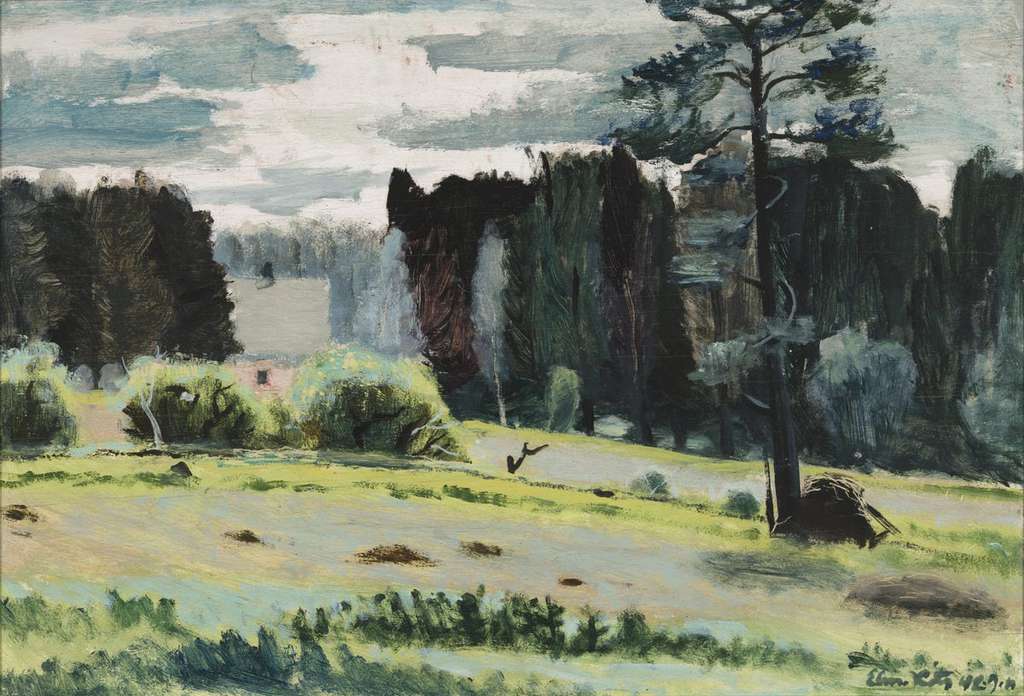
Thirty-year-old Elmar Kits had participated in exhibitions for several years already and made a name for himself by 1943. Many of his works had attracted the attention of both critics and museums. In 1940, he had already taken a job as a teacher at the Pallas Art School but during the German occupation in 1941-1944, he worked as a freelance artist, participating actively in exhibitions – he was productive during those years, completing over thirty paintings during those three years.
The end of the 1930’s until his solo exhibition in 1946 is considered Elmar Kits’s first creative period. “During those years, this artist’s restless creative nature that was always seeking new solutions revealed itself more clearly,” wrote art historian Mare Joonsalu. He was avidly interested in conveying light and shadow as well as atmosphere, yet it was first and foremost his vivid sense of colour that earned him praise.
Elmar Kits had a special connection to Valgemetsa. Namely, Kits acquired a summerhouse in Valgemetsa in 1950 – thus eight years after the completion of this painting. The landowner there purposely had his approximately 200 hectare landholding on the banks of the Ahja River parcelled into cottage lots in the 1930’s since the Tartu-Petseri railway line had been completed, thus improving connections with Tartu. His calculation was correct: ordinary citizens started coming here from the city as well as intellectuals, who started spending their summer vacations in Valgemetsa. Among others, the rector of the University of Tartu and several industrialists built summerhouses there, and artists and others also vacationed there. Nearly 60 cottages had quickly sprung up and a guesthouse was also built along with a store and a post office. Even sports fields, tennis courts and a heated swimming pool (!) were planned. Valgemetsa was doubtless still in its prime as a place for summer vacationing in 1942, when Kits went there to paint, yet as a passionate traveller and fisherman, Kits was nevertheless still interested first and foremost in problems related to painting, for which nature and the problems of light, shadow and colour that arise there offered excellent assignments.
An intimate format, sketchy composition and very sensitive colour transitions are indicative of a very close connection to nature. Kits has sought and hit upon an undertone in nature. A peculiar nuance filled with a still-life within the general order of things has aroused his interest. Silence can be perceived in this painting, speaking of the artist’s ability to capture that moment in nature, and within himself, when noise dies down and that which exists emerges in silence.